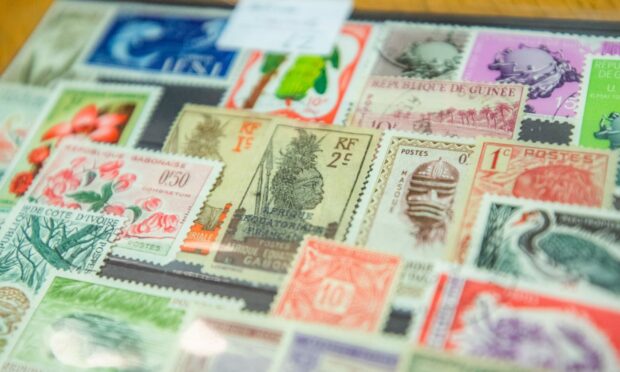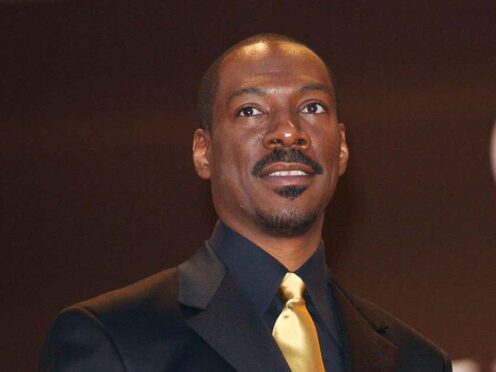Postage stamps and people’s desire to learn about the world around them have been inextricably linked for 150 years.
Collecting the tiny pieces of perforated sticking paper as a pleasurable pastime took off in the wake of the first postage stamp, the Penny Black, being issued in the UK in 1840.
Within 20 years as many as 90 countries around the world were producing their own versions.
As their designs moved away from solely concentrating on depictions of national leaders, stamps became a colourful means of showcasing a nation’s cultural identity – as their authorities saw it – to a worldwide audience.
This sparked a spectacular growth in collecting across the globe.
Digital media and the overwhelming rise of email in the 21st Century has meant stamp collecting and philately – the wider study of stamps, postcards and postal history – has largely faded from view.
The pursuit is by no means on its last legs, however.
Fortunes paid for collections
Last June, one of three known existing 1847 covers, or envelopes, bearing an orange penny stamp from Mauritius sold at auction in Germany. It fetched an astonishing sum, close to $12 million, making it by far the most expensive philatelic item ever.
Just a couple of months later, the story of plans to sell off a huge collection of stamps from the mid-19th Century, amassed over more than 80 years by Leven resident Geoff Whitehead, brought home the devotion shown towards the activity by enthusiasts outwith the realms of the mega-rich.
As a stamp-obsessed young man, Mr Whitehead – who died in January last year – had carved out a career at the world-leading London auctioneers Cavendish.
There he was able to indulge his passion as an in-house consultant responsible for stewarding collections.
Such a wilful blurring of hobby and occupation is a scenario that’s becoming increasingly familiar to Garry Smith.
The proprietor of Scotland’s longest-running record shop, Concorde in Perth, he was first bitten by the philately bug in the mid-60s and has recently started a stamp department at his Scott Street premises.
Vinyl and stamp collections
Like many others, he stepped up his interest in his own collection during lockdown, which led him to spotting a gap in the market after reflecting on the demise in recent years of virtually all the last remaining bricks and mortar stamp outlets.
“I have got quite a lot of duplicate stamps and other items and my wife Hazel suggested I take them into the shop,” explains Garry.
“I brought a few boxes and bits and pieces in and one or two folk were interested and it’s just developed from that.
“I realised there’s a lot of collectors out there, so I’m continually sorting and bringing more in every day.
“It was one of those moments when the penny drops, because I have so much at home. I buy collections and after keeping what I want I tend to be left with a lot, so my thought was, ‘why not make a business out of this?'”
Garry says it’s the desire to learn about faraway lands and the natural world that initially fired his interest in stamps, and which has kept him fascinated by them almost 60 years on.
“It started when I was in my last year at primary school, if I remember correctly,” he adds.
So much contained in small things
“My teacher must have been interested in stamps and started a stamp club after school, and also my dad collected stamps.
“I’ve always had an interest in geography, countries and so on, and also in nature and birds, so that’s where the interest lies for me.
“The great thing is you can build up a collection on almost any single subject you can think of, for example butterflies, trains, cars, boats, planes – everything really.
“Some people just collect maybe British or Commonwealth stamps or new stuff, whereas I go for anything to do with stamps, including envelopes and postmarks. It’s a huge topic and every single aspect appeals.”
Such a blanket approach to all things postal chimes with the ethos of the Association of Scottish Philatelic Societies (ASPS), which is holding its 91st annual congress at the Fair City’s Dewars Centre next Friday and Saturday.
The normally annual jamboree is being staged in-person for the first time since 2019.
It is set to welcome collectors from all over the country, as well as stamp dealers from as far away as the south of England.
Perth Philatelic Society secretary and ASPS president Colin Caskie has put together a themed postcard display for the gathering.
Entitled ‘Happy Days at Carnoustie’, it highlights the cultural activities that took place in the Angus town – where he was a minister for 20 years – during its heyday as a holiday destination from the 1930s to the 1950s.
Rev Caskie views postcards in their golden age early in the last century as “like the text messages of yesteryear” and concurs with the view that stamp collecting and its linked pursuits can help broaden horizons.
‘Stamps were a window on the world’
“Growing up in suburban Glasgow in the 1950s, stamps were a window on the world and then studies, work, marriage and children took over as my focus,” he explains.
“Later on I looked for a hobby that could command a degree of intelligent adult interest. A couple of copies of the Stamp Magazine started me off and I’ve been involved with the philatelic society ever since.”
He also sees signs of a resurgence of interest in stamp collecting and is at pains to point out that far from being a solitary activity the hobby has powerful social aspects.
“I do know that a number of people have come back to it during lockdown,” says the Perth resident.
“That’s just on the basis of interest shown at auctions and the prices realised. It doesn’t necessarily reflect an increase in attendance at society meetings, but then that’s a social thing.
“With regards to philately, people are not going out to meetings in the way they used to, but the stamp trade has responded with catalogues and collections being shown online.
“Some people I know say the only collection they are interested in is their own and that’s up to them. For me, the whole social aspect of people exchanging collections through meeting is important.
‘The pleasure of the hunt’
“There’s pleasure in mixing and one of the features of philatelic societies is visiting other ones. Our programme for next year will see us visit the Aberdeen, Dundee and Stirling societies and they will come and visit us.”
Rev Caskie believes a large part of the pleasure of philately is in “the pleasure of the hunt”, and hopes people will turn to the upcoming convention – which includes a competition for children – to try and track down long elusive items.
“The Scottish Congress is to philately what the Highland Show is to farming – it’s a showcase of Scottish philately and you’ll see magnificent fare there that you’ll just not see anywhere else outside of London,” he declares.
As its hosts, Perth Philatelic Society have produced a unique cover which celebrates both the club’s 75th anniversary in 2020 and the John Smeaton-designed Perth Bridge reaching its historic 250-year landmark last year.
To further commemorate next week’s event they have also commissioned a special postcard showing a range of Perth’s 18th and 19th Century postmarks.
This includes the Fair City’s famous lamb-with-banner handstamp of 1751, as well as a perforated miniature stamp sheet with views of local landmarks.
The antiquarian aspect to the national exhibition appeals to Garry Smith.
Like vinyl, stamps will come back
But, having witnessed first hand many youthful music lovers unexpectedly discovering the joys of old-school vinyl in recent years, he realises a fresh take on a tried and trusted format can take off .
And so he hopes to see a new generation enthusiastically embracing the stamp world.
“It’s probably like vinyl records, the collectors never went away, they’ve always been out there,” he contends.
“I’ve early British stuff that goes back to Queen Victoria, right up to modern times and all sorts of interesting covers.
“What the Post Office use now they may not use in a year’s time, so something like a simple frank on an envelope will change.
Collectors are from all walks of life
“There’s a lot of aspects to develop and I’d like to start a junior stamp club for kids, because it is such an interesting hobby.
“One or two girls have bought stamps in the shop and I think they use them for designs – putting images onto posters and things like that.
“We also get people who you’d never think were collectors but they’ve got their own interests. One customer is always looking for stamps showing costumes and traditional native dress from all parts of the world.
“The other great thing with it, as well, is you don’t have to spend a lot to enjoy it, often just pennies.”
If his ongoing Concorde project has taught Garry anything, it’s possibly that stamp aficionados – rather like the items they gather – come in all shapes and sizes.


















